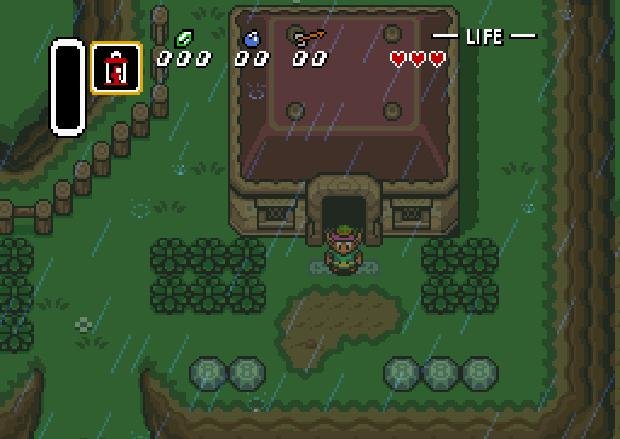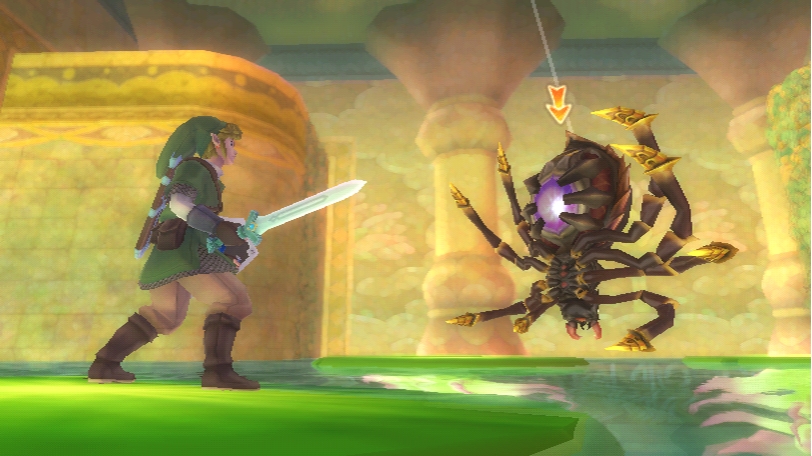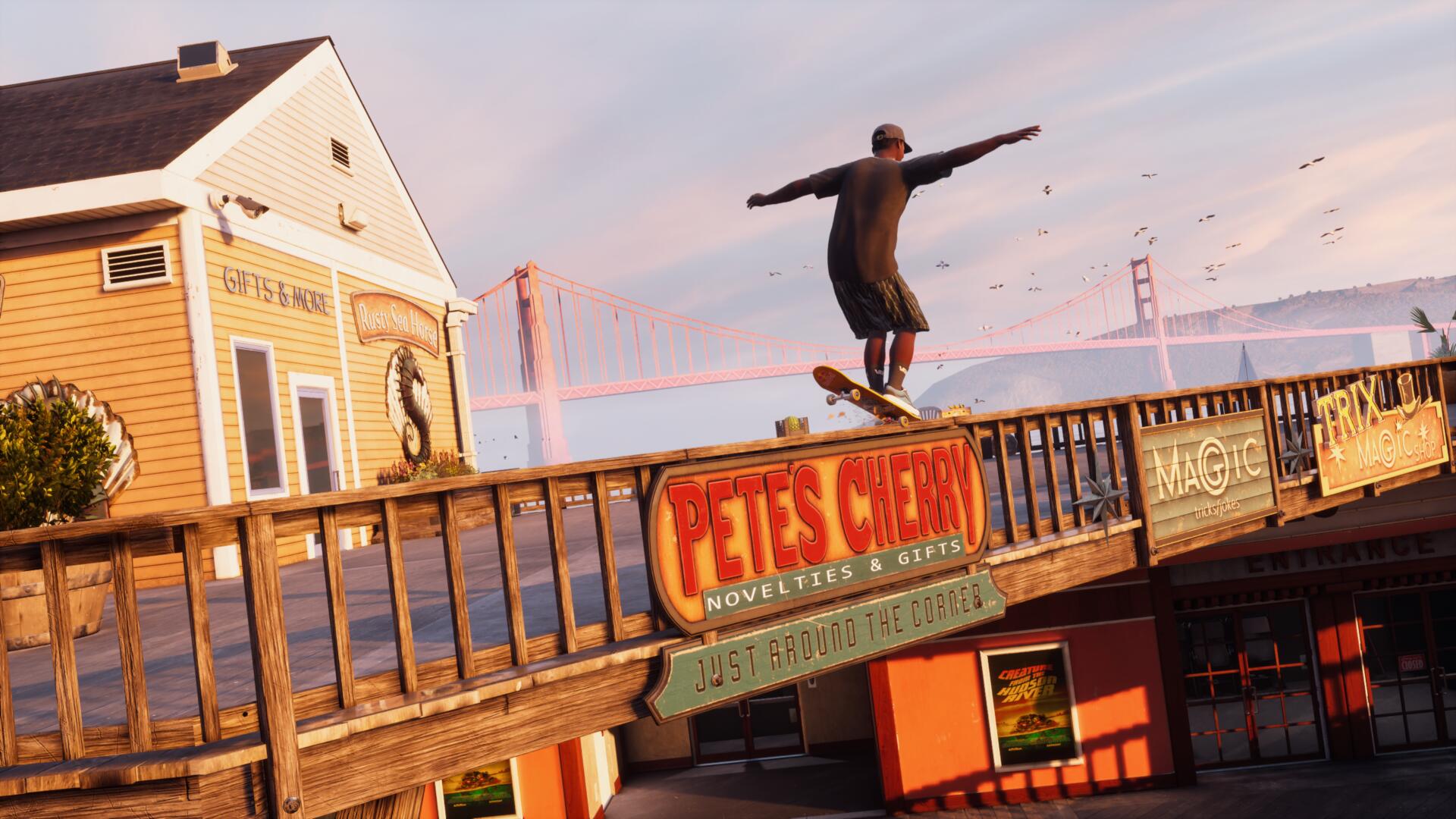Zelda, past and future: An interview with Koji Kondo and Eiji Aonuma
The legends behind Legend of Zelda share their thoughts on Zelda for Wii U and the possibility of a 3D Link to the Past remake
GR: So switching gears, Aonuma-san, you were a director on the original Ocarina of Time. How was your experience working on the 3DS remake?
Eiji Aonuma: At the time, after finishing Ocarina of Time, there were still a lot of things that we wished we could have done with the game, and of course we took a lot of those ideas and applied them to The Legend of Zelda: Majora's Mask. But even after creating the game, I still felt that there were things that I wish we could have done within Ocarina itself. So this time when creating it for the Nintendo 3DS, I felt like it was a great time to go in and make some of those changes and improvements.
In particular, I hope that the Water Temple has now become something that's much more enjoyable for people to play through (laughs).

GR: So are there any aspects of the 3DS that you think work particularly well for the Zelda series?
EA: Of course with the Nintendo DS games, one of the things that we looked at was how we could utilize touch control with the Zelda series, particularly of course with the first game, Phantom Hourglass, and then refining it again after that. With Ocarina of Time 3D for Nintendo 3DS that was another thing we looked at, was what sort of touch screen control was really suited to that game.
I do think that in general, touch control is something that works very well for the Zelda series. But the other thing we did with Ocarina of Time 3D of course was the motion control. The idea is that you're able to take some of those items that you use to aim in first person, and you can now aim them yourself with the motion control. In particular, it gives the feeling that the game world extends beyond the screen and really helps give you the feeling that the game world exists all around you. I thought that was something that worked really well with Ocarina 3D.
GR: So working on Ocarina 3DS, did you get any ideas for a new Zelda 3DS game?
Weekly digests, tales from the communities you love, and more
EA: Of course! But I can't give any concrete examples…
GR: Is there any chance of seeing Majora's Mask on 3DS?
EA: I did hear that there's a website here that was launched in North America by some people that are hoping we'll release a 3D version of Majora's Mask. Of course I'm very flattered to hear that so many people are asking for that game, so I hope that at some point in the future hopefully, maybe, we'll be able to do something with it.

GR: At this point in time, would you ever consider making another 2D Zelda game?
EA: Well actually, even Mr. Miyamoto himself has been talking recently about going back to the 2D Zelda games, in particular the ones that were designed with multiple levels to the world like A Link to the Past, and taking those 2D graphics and recreating them in 3D so that you could get a sense for the depth of those worlds. That's something that might be interesting to do, so I would say there might be a possibility of something like that in the future.
If we had had time, we would have probably done something like that for Four Swords.
GR: So how has working on Skyward Sword been for you, and how does it compare to working on Twilight Princess?
EA: The team worked very hard on Skyward Sword, and in particular, the director, Mr. Fujibayashi, worked very hard on the game design. I think the development took maybe a little bit longer than we had anticipated, but certainly none of it was time wasted. It was all very much geared toward making the game as good as it can be, and in the end I think the final game is one that really does feel like a full and complete Zelda game with a lot of depth and variety to it.
GR: It seems like the series alternates between darker-themed entries like Majora's Mask and Twilight Princess and lighter ones like Wind Waker. Where does Skyward Sword fall on this spectrum and is there a reason why the games tend to alternate?
EA: I guess maybe if we do create something that's more on the darker side, then it's just because we want to have a change of pace ourselves, then maybe the next time around without thinking about it, we start creating something that feels a little brighter than the previous one.
This time in particular with Skyward Sword, because the world was set in the sky and sky was such a strong theme throughout the game, it certainly would have been difficult to make a sky that feels dark and gloomy. It really did feel like it needed to be a brighter world. And then of course, the game also has the skyward power where you lift the sword into the air and charge it up with the beam of light, so I think that may have played into that as well. And then graphically, based on those themes, everything grew from there.

GR: One of the things that fans love most about the Zelda series is the familiar quality of certain recurring elements. How do you balance between giving what fans want and still trying new things with the series?
EA: Generally when we start work on a new Zelda game, in terms of how we retain that traditional Zelda feel, one of the things that we really look at is what the elements are that have really resonated with people and that, from an interactive standpoint, felt really good. Those are the ones that we tend to bring back and retain and keep a strong focus on.
When it comes to what we change, we really try to look at what the areas are where, within the current age that we're in, that we maybe no longer need to cling to and can look at changing. A good example of this is the save system – we've completely redone the save system for the game this time. Another example was taking the puzzle solving that you experience in the dungeons and bringing that out into the overworld so that the overworld feels more complex, like there's more going on there.
Generally what we try to do whenever we're sort of evolving the series is we look at trying to remove the borders or barriers between the different elements of the game, and those are I think two good examples. Perhaps one of the reasons we tried to do that this time is looking at people's busy lifestyles today, and with the save system what we wanted to do was create a save system that made stopping play and resuming play much easier, so that when people are busy in their everyday lives they still have an opportunity to pick up the game and play it in short bursts and be able to continue the adventure without getting lost of confused. In terms of looking at both what people want from a Zelda game but also in terms of how we can take the Zelda game and make it something that's easier for them to be able to spend the time that they need to to finish the game.



